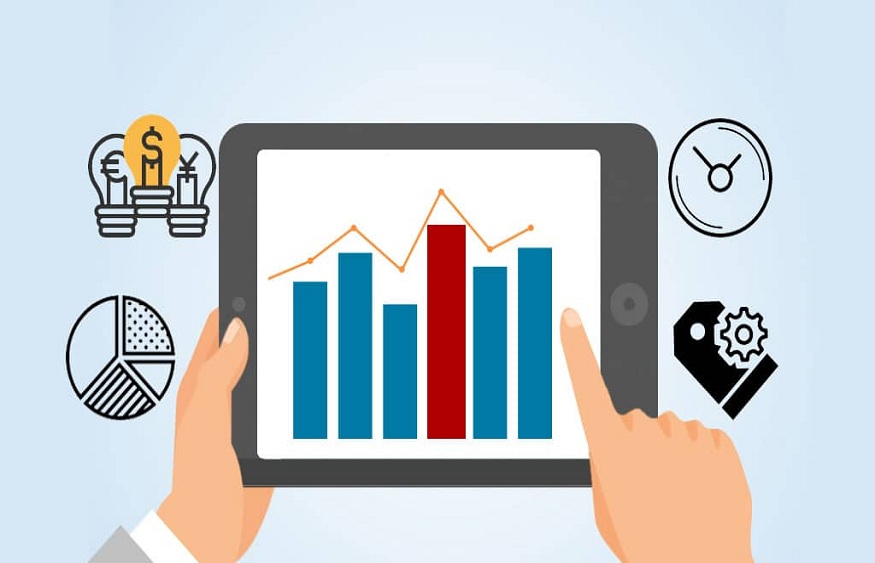How Pricing Optimization Software is Revolutionizing Revenue Growth?

Setting the optimal price for products and services is a major challenge for retailers and service providers. Traditional pricing methods that don’t account for consumer behavior, market dynamics, and competition often prove ineffective. To stay competitive in the market, businesses are increasingly adopting dynamic price optimization strategies supported by advanced software. This allows them to make informed pricing decisions that maximize their profitability.
Dynamic pricing, also known as surge pricing, demand-based pricing, or real-time pricing, is a strategy that involves adjusting prices based on multiple factors such as market demand, customer behavior, time of day, seasonality, and competition. Unlike fixed pricing which uses static price tags, dynamic pricing allows for flexibility and adaptability to maximize revenue and profit margins.
Dynamic pricing strategies have become increasingly popular in industries such as e-commerce, fashion, quick commerce, and retail supermarkets. These sectors frequently experience fluctuations in demand. By adopting a dynamic approach, businesses can implement price optimization strategies that are driven by goals and based on elasticity across their entire product range. This allows them to set prices at different levels for specific categories, product lines, national markets, or global regions.
How is Dynamic Pricing Beneficial?
Using a price optimization software for pricing policies provides several benefits to businesses. Here are some of the advantages:
- Maximizing Revenue: Businesses can utilize dynamic price optimization software’s to maximize their revenue potential. During periods of high demand, prices can be raised to capture the willingness of customers to pay more. Conversely, when demand is low, prices can be lowered in order to attract more customers and prevent unsold inventory.
- Real-time Responsiveness: By implementing effective price optimization strategies, businesses can promptly adapt to market shifts and competitive actions, ensuring their pricing approaches remain flexible and current.
- Competitive Edge: Dynamic pricing gives businesses an advantage by offering competitive prices that are better than their competitors’, all while still maintaining healthy profit margins.
- Personalization: Businesses can improve the customer experience and build brand loyalty by customizing prices to match individual customer behavior and preferences.
- Inventory Management: Implementing optimized pricing strategies can greatly enhance inventory management by minimizing the risks of both overstocking and stockouts.
The Role of AI-Led Price Optimization Software
With price transparency becoming more prevalent, retailers need to embrace an adaptable and decisive pricing strategy. To stay ahead in the market, businesses can utilize advanced market analytics and employ a machine learning-powered dynamic pricing engine to intelligently set optimal prices.
To optimize pricing strategies, businesses can utilize an AI powered price optimization software. This technology analyzes historical data, market trends, external factors, and predictive algorithms to forecast future demand patterns. By gaining insights into these fluctuations, companies can identify the most effective price points for various situations.
Data Analysis and Market Trends
By analyzing extensive historical sales data and considering factors like seasonality, economic conditions, and customer preferences, demand forecasting software helps businesses identify patterns and trends. This enables informed decisions on when and by how much to adjust prices.
Real-time Data Integration
In a rapidly changing market, staying competitive requires real-time data integration. By utilizing demand forecasting software that constantly updates with the latest information, businesses can make pricing decisions based on accurate and up-to-date data, ensuring precise predictions.
Competitive Analysis
In dynamic pricing, it is essential to have a clear understanding of the competitive landscape. By utilizing demand forecasting software, businesses can effectively monitor and analyze the impact of competitors’ price changes on market demand. This valuable information allows businesses to strategically adjust their own prices in response.
Multichannel and Multi-store
Dynamic pricing software is designed to meet the needs of various types of retailers, including those in eCommerce, brick-and-mortar, and omnichannel environments. Whether a retailer operates a single store or has an extensive network of locations, this advanced software provides a unified tool that can seamlessly integrate all channels. This allows retailers to effectively address the unique requirements and characteristics of each channel they utilize.
Customer Segmentation
Price sensitivity can vary among different customer segments. By utilizing price optimization software, businesses can segment customers based on their purchasing behavior and provide personalized pricing, discounts, or promotions for each segment. This allows for the creation of well-defined product and customer segments while ensuring that the prices offered align with each consumer’s willingness to pay.
Seasonal Adjustments
Consumer demand is greatly influenced by seasonal trends. To make the most of peak seasons and minimize slower periods, businesses can utilize price optimization software. This software helps identify these seasonal patterns and allows businesses to adjust their pricing strategies accordingly.
Integrated Data Sources
To make well-informed decisions, it’s crucial to have accurate and comprehensive information. This means incorporating various data sources such as sales figures, competitor analysis, conversion rates, website traffic, and even considering factors like climate and seasonality. By taking this scientific approach and considering all relevant data, you can ensure that your decisions are based on solid grounds.
Test and Optimize Your Pricing
To determine how effective your pricing strategy is, it’s important to assess its impact and performance using key metrics such as sales volume, profit margin, conversion rate, and customer retention. To refine your approach, conducting experiments and testing different pricing scenarios through methods like A/B testing, multivariate testing, and price elasticity analysis is crucial. By thoroughly examining the results of these tests and making necessary optimizations, you can identify the most optimal price points and strategies that will generate maximum results for your business.
Review and Update Your Pricing
To ensure the effectiveness and relevance of your pricing strategy, it’s important to continuously monitor market trends, gather customer feedback, and stay informed about competitors’ actions. This allows for adaptability and necessary updates to your price optimization efforts in response to changing conditions. By regularly reviewing and adjusting your pricing strategy based on the data and insights collected, you can maintain a competitive edge while ensuring profitability.
About the Company
Kronoscope, a cutting-edge price optimization software developed by Fountain9 leverages the power of artificial intelligence to revolutionize pricing strategies for businesses by analyzing key factors such as product features and market dynamics to determine the most competitive prices. With its AI-powered capabilities, this innovative solution automates the pricing process, enabling companies to enhance sales and maximize profits. By striking the perfect balance between product value, customer expectations, and profit margins, Kronoscope empowers businesses to meet customer needs effectively while achieving optimal financial outcomes









